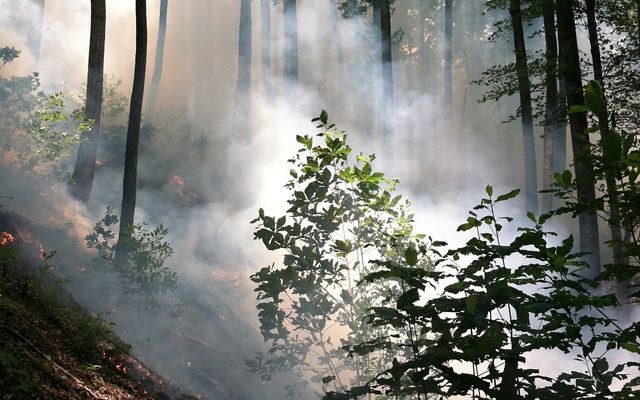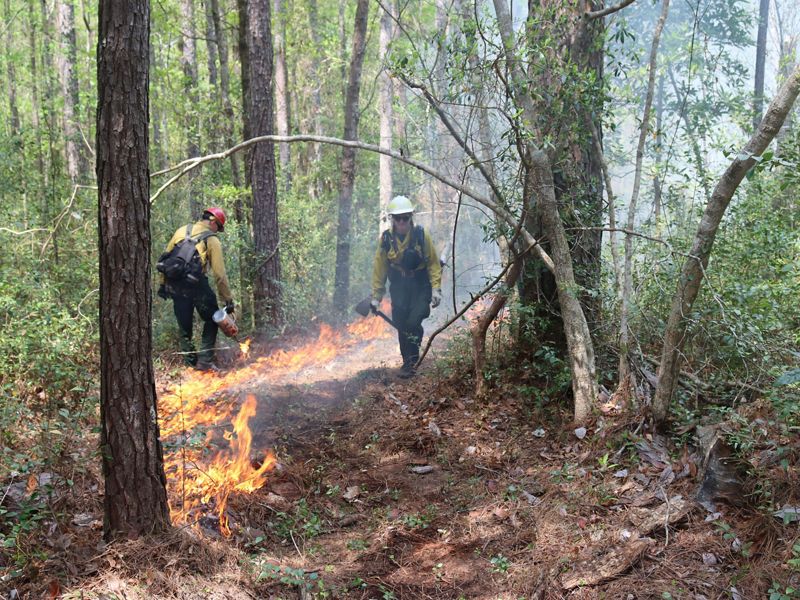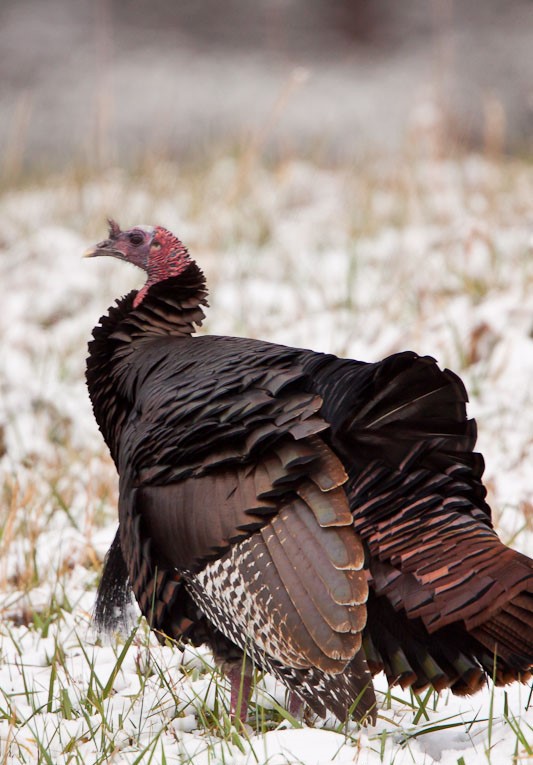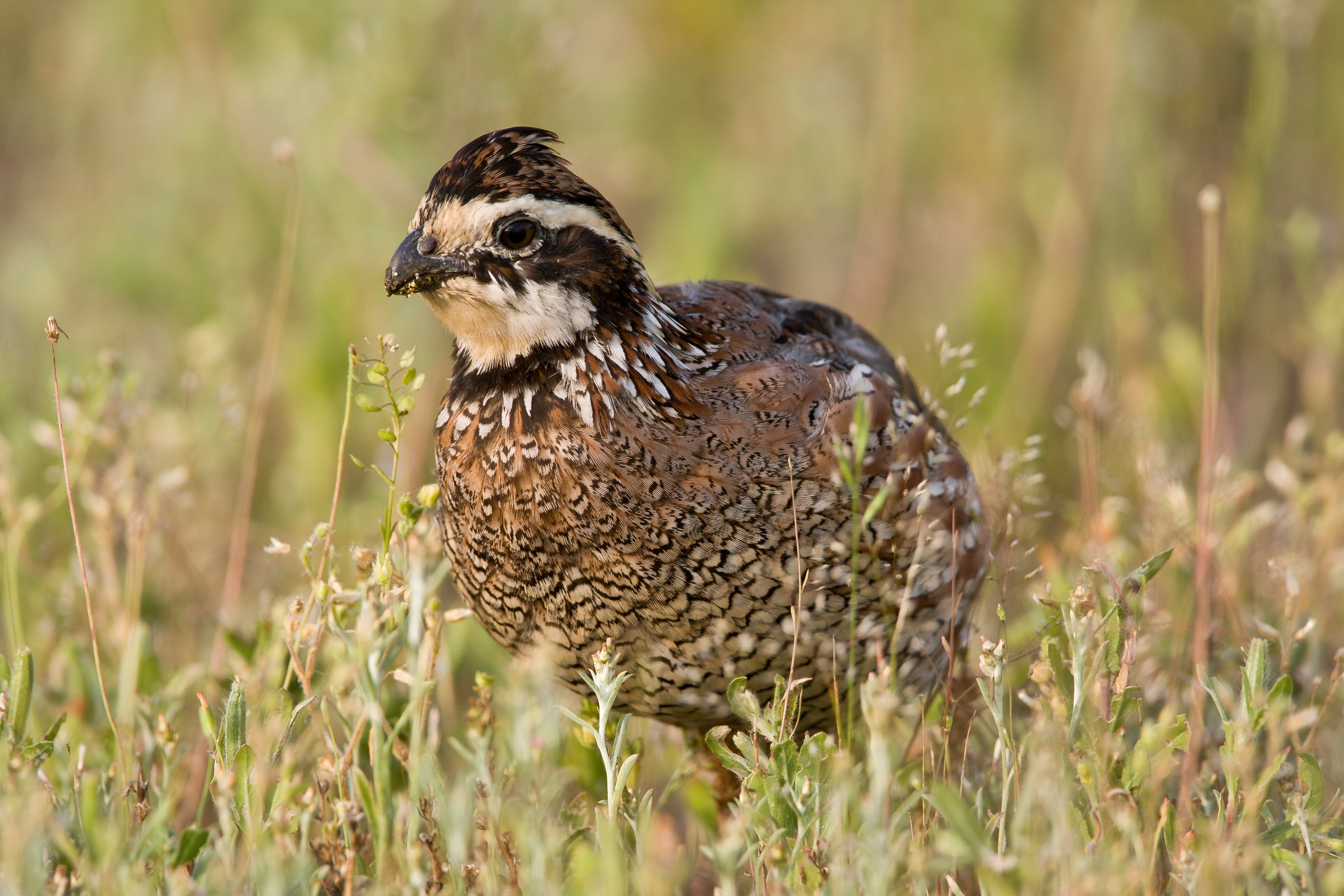
Pisgah National Forest Grandfather, Appalachian, and Pisgah (GAP) restoration project. © Dennis Oakley
The economic and physical wellbeing of Western North Carolinians is closely tied to Pisgah National Forest. That’s why it is critically important that people familiarize themselves with and comment on the Grandfather, Appalachian and Pisgah (GAP) restoration project. Named for three ranger districts in the forest, this project brought together the community and more than 20 organizations to use a combination of controlled burning and thinning to reduce wildfire risk and improve the forest.
TNC has been a partner in the GAP planning process. It fits into our efforts to work in the Appalachians on a landscape scale—improving forest management for the good of both people and nature. TNC helped to conduct the project analysis, which is focused on portions of the forest that are both fire-adapted and at high-risk of wildfire. We have gathered and analyzed data to plan an informed burn plan for this project.
Prior to European settlement, the region’s oak/hickory forests burned regularly. Indigenous people lit those fires to improve habitat. The region’s Scots Irish settlers followed suit. That changed in the last century with fire being excluded from the forest and all fires being suppressed.
Pisgah Forest, like the rest of the Southern Appalachians, is out of kilter. A century worth of fire suppression has set the stage for damaging wildfires that could harm the forest and pose substantial risk to human communities.
Bringing Back Oaks and Hickories
How climate-informed forestry is restoring nature's balance in the Southern Blue Ridge.
Read more
Today’s Pisgah Forest is changing. Mast-producing trees like oaks and hickories are being replaced with maples and poplars, which provide autumn color but little else, especially for wildlife. Maples and poplar are particularly bad in light of a changing climate. They use up to four times as much water as oaks and hickories, and they are also less resilient to hotter temperatures.
The GAP project will improve habitat for a wide range of animals, including wild turkey, bobwhite quail and grouse. It will also remove fuel that has been built up due to fire suppression. TNC is excited that this project proposes up to 18,000 acres of controlled burns annually for the next ten years and that it combines controlled burning with much needed mechanical treatment to get more sunlight to the forest floor. This sunlight is critical for oak regeneration.
Wildlife at Pisgah National Forest
Animals that will benefit from the GAP restoration project.
At TNC, we’ve long recognized that we can only achieve meaningful outcomes through a large scale, collaborative approach coupled with out-of-the-box thinking. The GAP project does just that. We hope you’ll choose to support this work, as doing nothing would have a serious implications. Visit the GAP story map for more information, and share your thoughts with the Forest Service here.
Nature Right to Your Inbox
Sign up to receive monthly conservation news and updates from North Carolina. Get a preview of North Carolina's Nature News email.











